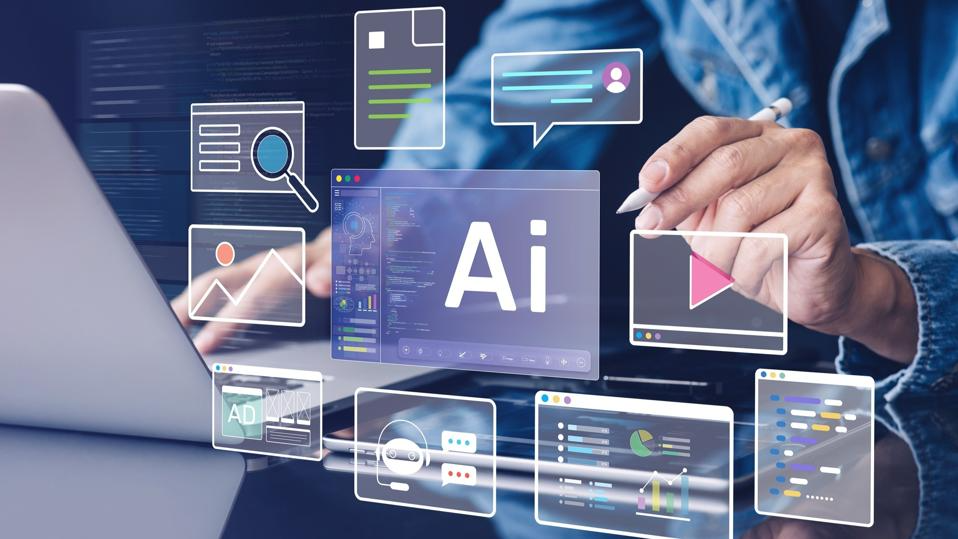Artificial Intelligence has already become the cornerstone of digital transformation, but Generative AI (GenAI) is rewriting the rules of creativity itself. In 2025, design teams, product managers, and developers are embracing this wave to create smarter, faster, and more human-centric products. Whether you’re building a mobile app, a SaaS platform, or a digital experience, understanding how generative AI is transforming design can give you a critical edge.
Before diving in, it’s essential for businesses exploring MVP development services to understand how AI can accelerate early-stage product design and prototyping. GenAI doesn’t just optimize the design process—it redefines it.
1. From Idea to Prototype in Minutes
Gone are the days when design sprints required days of brainstorming and wireframing. With GenAI tools like Figma AI, Adobe Firefly, and Midjourney, teams can now go from an idea to a working prototype in a fraction of the time.
AI algorithms can understand written prompts—like “Design a minimalist e-commerce homepage for luxury skincare”—and instantly generate multiple design variations. This shortens the ideation phase dramatically, enabling teams to test and iterate faster.
Generative AI also reduces creative bottlenecks. Non-designers can now contribute to the creative process, allowing founders, marketers, and engineers to share visual ideas that the AI then refines. This democratization of design ensures innovation doesn’t get stuck in departmental silos.
Why this matters in 2025:
- Quicker time to market
- Improved cross-team collaboration
- Reduced dependency on manual design iterations
2. Personalized User Experiences at Scale
User experience (UX) has always been about empathy and personalization—but scaling that across thousands of users has been nearly impossible. GenAI changes that.
Modern AI systems can analyze behavioral data, user feedback, and interaction patterns to automatically generate personalized UI layouts. Imagine a product that redesigns itself based on how each user interacts with it. A finance dashboard might show detailed analytics for power users, while simplifying visuals for beginners—all without manual intervention.
AI can also test and optimize color schemes, typography, and micro-animations in real-time, ensuring every user gets an experience tailored to their preferences and emotional responses.
Examples include:
- Streaming apps using AI to rearrange interface layouts for higher engagement.
- E-commerce platforms dynamically re-styling product pages based on user browsing behavior.
- SaaS dashboards auto-customizing widgets per user role.
Result: Consistent, data-driven personalization at scale.
3. Smarter Collaboration Between Humans and Machines
Design has always been a collaborative process, but now the collaboration extends beyond humans. Generative AI functions as a “co-designer,” offering intelligent suggestions, automating tedious work, and even predicting what the next step should be.
Tools like Runway ML and Uizard are already integrating machine learning models that can interpret context—recognizing when a layout feels unbalanced or a CTA lacks contrast—and instantly offering corrections. Designers can approve, tweak, or reject these changes, keeping human creativity at the center.
In 2025, we’re also seeing the rise of multi-modal design collaboration, where text, voice, and image prompts can all be used together. A product manager can describe an idea verbally, while an AI tool generates visual drafts in real-time.
Outcome:
- Less friction in cross-department communication
- Fewer design handoffs
- Increased creative throughput
This kind of collaboration doesn’t replace designers—it empowers them to focus on high-level creative strategy while AI handles repetitive execution.
4. Data-Driven Creativity with Machine Learning Insights
Generative AI doesn’t work in isolation—it’s powered by machine learning. By analyzing historical performance data, AI systems can predict which designs will perform best before they’re even launched.
For instance, a mobile app’s design system can use predictive modeling to identify which layout style drives higher engagement or lower bounce rates. Machine learning models can simulate how thousands of users would respond to a new interface—long before it goes live.
Companies offering machine learning development services are helping organizations integrate these predictive systems directly into their product design workflows. As a result, data-driven creativity becomes the new standard—where every pixel and motion is informed by insight, not just intuition.
Applications include:
- Predicting conversion rate impact of design changes
- Real-time UI performance optimization
- Visual A/B testing automation
The takeaway: Creativity no longer has to be subjective. Designers can now validate their instincts with AI-powered evidence.
5. Ethical, Inclusive, and Sustainable Design
While speed and efficiency are vital, the biggest impact of Generative AI in 2025 lies in its ability to promote ethical and inclusive design. As more users demand transparency and accessibility, AI tools are being trained to detect and correct bias automatically.
AI can now test color contrast for accessibility compliance, suggest gender-neutral imagery, and even detect cultural sensitivities in visuals. This automation ensures that products designed with AI reach a global audience without alienating any demographic.
In sustainability, AI can help reduce the environmental footprint of digital products. For instance, optimizing image compression, reducing animation load times, and automating “dark mode” options—all contribute to energy efficiency in user interfaces.
Key ethical design principles powered by AI:
- Bias detection and correction
- Accessibility optimization
- Energy-efficient design frameworks
In essence, Generative AI helps designers create not just aesthetically pleasing experiences, but responsible and inclusive ones.
The Future: Designers as AI Directors
In this new paradigm, designers are evolving from “creators” to “directors.” Instead of drawing every button or pixel, they orchestrate intelligent systems that generate and refine ideas in real-time. This hybrid model—where human intuition meets computational intelligence—defines the future of product design.
The designer’s new role involves:
- Crafting the right AI prompts and parameters
- Interpreting AI outputs with critical judgment
- Ensuring brand consistency across automated designs
By focusing on strategy, storytelling, and emotional resonance, human designers retain creative control while leveraging AI’s limitless efficiency.
Conclusion
Generative AI has moved from being a buzzword to a creative partner. In 2025, it’s no longer a question of if AI will influence product design, but how deeply it will shape the way we build and experience digital products.
From instant prototyping and personalized UX to predictive performance and ethical innovation, AI is amplifying what designers can achieve. Businesses that learn to harness this synergy early—through agile strategies and smart partnerships—will not just stay relevant, but lead the next generation of digital innovation.
If you’re planning to build your next product idea, consider how generative design tools and machine learning development services can shorten the road from concept to reality. The future belongs to teams that co-create with machines—faster, smarter, and more creatively than ever before.
FAQs: Generative AI in Product Design
1. What is Generative AI in product design?
Generative AI refers to artificial intelligence models that can create new and original designs, content, or ideas based on prompts or data inputs. In product design, it helps generate design layouts, prototypes, and visuals automatically, speeding up the creative process while maintaining quality and consistency.
2. How does Generative AI improve product development speed?
Generative AI tools allow teams to move from concept to prototype in minutes instead of weeks. By automating repetitive design tasks, suggesting variations, and integrating real-time feedback, AI reduces development cycles significantly—especially valuable during MVP development service phases.
3. Can AI replace human designers?
No. Generative AI enhances human creativity but doesn’t replace it. Designers still guide the vision, strategy, and emotional aspects of a product. AI simply assists by taking over repetitive, data-driven, or time-consuming tasks, allowing humans to focus on innovation and storytelling.
4. What role does machine learning play in AI-driven design?
Machine learning models power Generative AI by analyzing user behavior, performance metrics, and design outcomes. Through machine learning development services, businesses can integrate predictive analytics to understand what designs work best and why—helping them make smarter, data-backed creative decisions.
5. How can startups benefit from Generative AI in 2025?
Startups can use Generative AI to prototype faster, personalize user experiences, and scale creativity without hiring large design teams. It also enables faster market testing, reduces costs, and supports inclusive design practices—critical advantages for early-stage companies in competitive industries.








